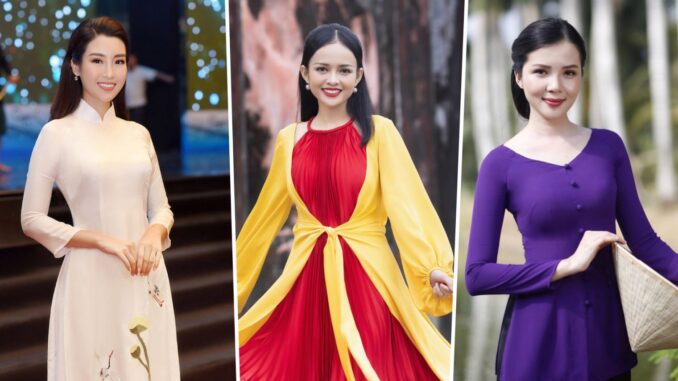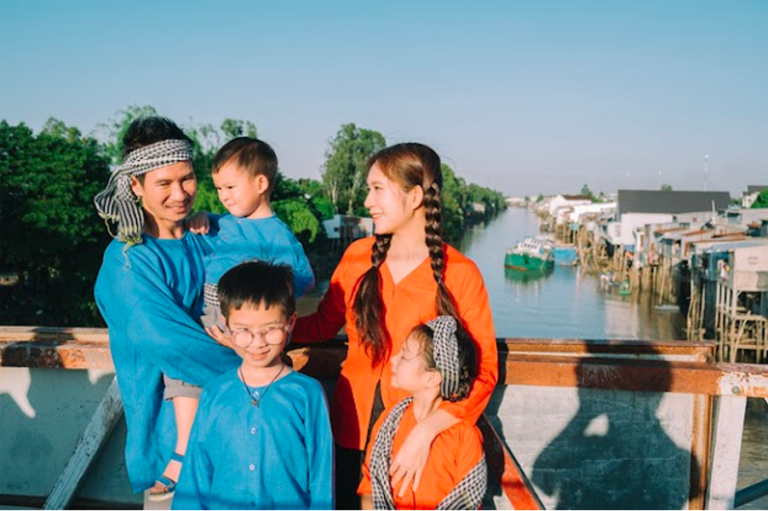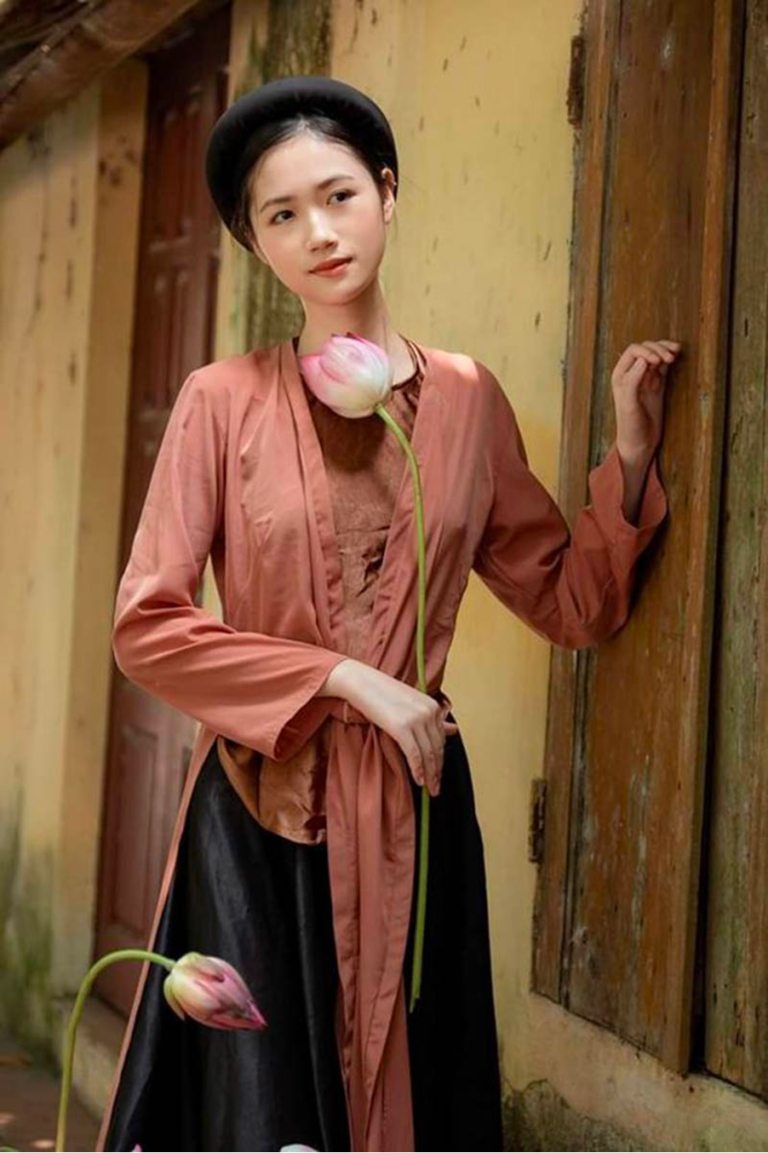
Vietnam is a multi-ethnic country with 54 ethnic groups and nearly 4,000 years of history, which built up a great culture of diversity and uniqueness, especially traditional costumes. You can know more about the beauty, elegance, and characteristics of local people when you look at their traditional costumes. Vietnamese traditional costumes have been affected by many cultures in the world from past to present. This article will help you to have a deeper understanding of the Vietnamese most popular traditional costumes, as well as their origins, history, and culture.
1. Áo dài (Vietnamese Traditional Dress)
Vietnam Amazing has an article about this traditional costume. You can read it here!
2. Áo Bà Ba
Although Ao Dai is chosen as a Vietnamese national costume, the people in the Mekong Delta (southern Vietnam) have their own traditional clothing – the Ao Ba Ba. This costume is so popular in the southwestern countryside that you can see most of the local people wearing this shirt during their daily activities. While you visit Mekong Delta, you can be impressed by the images of the Ao Ba Ba glimmering under the green coconut groves, in the rowing boats down the rivers, on the monkey bamboo bridges, or between the crowded floating markets.
The Ao Ba Ba is a collarless shirt with a back made of a straight piece of cloth. The front flap is divided into two pieces and in the middle, there are buttons from the neck down to the belly. This elaborate shirt is often paired with long white or black trousers. The colors and materials of this set depending on the combination and the desire of the wearers. Farmers and peasants in the Mekong Delta used to wear black or brown Ao Ba Ba to work on the rice fields because they were both clean and easy to wash.

Sewing fabrics are simple materials, such as single fabrics, pungent fabrics, and linoleum, which very quickly dry after washing. Near the hem, there are two extra pockets that are quite convenient for holding necessary items. Thanks to these conveniences and comfort, Ao Ba Ba is often worn by both men and women in the Mekong Delta in their daily life activities. Particularly in special events or festive occasions, they will choose Ao Ba Ba with lighter colors like white, or ash gray. The noble class chooses the color of young, pale blue with more expensive fabrics such as silk or satin to show off their richness.
Over the years, the basic design of traditional Ao Ba Ba has been kept from generation to generation but refurbished to update new fashion trends. The modern Ao Ba Ba for women is not as straight and wide as it used to be, but it has been narrowly stitched to embrace the body and emphasize the beautiful curves of women’s bodies.
3. Áo Tứ Thân
Before the appearance of the Ao Dai, the Ao Tu Than was worn by Vietnamese women and considered the country’s most enduring relic. The origin of Ao Tu Than is still a question but its illustration was sculpted on the surface of Trong Dong (copper drum) thousands of years ago. The basic Ao Tu Than consists of three main parts: the “Yếm” – an ancient bodice worn as an undergarment by women to cover the chest area; a long skirt from the waist; and a flowing tunic worn as the outermost layer. The tunic splits into four flaps, also called “than”: two back flaps sewn together (made up of a full flap) and the two front flaps can be tied together by a silk sash tied at the waist as a belt.

Originally, Ao Tu Than was dyed with natural colors, like the dye-yam, tropical-almond leaves, or mud. In these modern days, Ao Tu Than is no longer widely used in the local daily life but can be found in several northern-related festivals and events with more vivid colors. Because the bodice and the skirt and the tunic have different color gradients. If you have a chance to join in the Lim festival in Bac Ninh Province, you can witness the female folk singers wearing this attire with accessories, such as “Khan Mo Qua” – a black crow’s beak kerchief made of heavy fabric, “Guoc Moc” – a pair of wooden clogs and “Non Quai Thao” – a kind of conical hat with fringe hanging at both sides.
Vietnam warmly welcomes you to enjoy Vietnamese cuisine and culture and to make your trip go smoothly as the very first step, make your plan into reality by obtaining a Vietnam visa at https://www.vietnam-evisa.org.
Source: aseanvietnam.vn